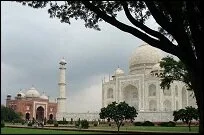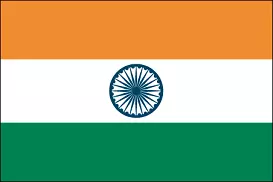Of the many similarities, one of incredible significance to the culture is the belief in re-incarnation, which has led to a number of cultural changes. Perhaps the most noticeable of these lifestyle changes is that many Indians are vegetarian in order to avoid eating animals, which they view as life no different from their own. The Hindus believe the hierarchy of differing animals is based upon where each falls in the ladder of re-incarnation, while the Jains avoid eating any animal since all are sacred. Due to the Hindu hierarchy, the culture developed along the lines of a caste system, which truly divided the people by class. Today the caste system has been mostly eliminated in cities, but it still exists in villages and its existence for such a long period of time has led to a number of significant aspects of modern Indian culture.
Due to this past, India remains fairly divided by class as many people feel those born into money deserve it and those who weren't were born money, were placed in these positions for a reason. Even though the caste system is nearly unheard of in the cities, there is still little social mobility due to this past as many people fail to seize opportunities due to the belief that they are not deserving. Other aspects of their faith and past have arisen in other forms as arranged marriage is somewhat common among certain socio-economic groups as many parents want their children to marry another from the same income and social ranking as themselves.
Despite the great influence from Hinduism and other religions that are common in India, Islam has made just as great an impact to much of the population. A large part of the population is Muslim and this religion dictates a great number of life decisions, including not drinking alcohol and refraining from the consumption of pork products. Islam expands to include other social rules as dress, behavior, and social interactions are also shaped by this faith.
Religions, including all those mentioned above, are the greatest influence on India's culture today. However, the world is shrinking in a number of ways as cell phones are common, transportation is easier as people are getting cars, and foreign foods and other cultural phenomenons are now a part of daily life in India. There is an aging population who clings to historic traditions and mentalities, while a younger generation is relying more heavily on technology, turning to international fashions, urbanizing, and getting better educated as they turn to information technology (IT) jobs in the major cities. Culturally, India is diverse and so many elements factor into this diversity, beginning with religion and their history, but also reliant on modern technology, urbanization, and ever-changing priorities.
Articles
| |

Why Should You Go To India?
By Craig P.
January 18, 2015
India is a huge and diverse country, with enormous differences in culture, language, ethnicity, climate and geography - over one billion people inhabit this incredible country. India has always been popular with the "hippie" backpacker, and is generally cheaper and more innate than Southeast Asia.... Continue Reading
|
|
 India's flag is saffron (the dulled orange), which is for courage, sacrifice, and the spirit of renunciation, white for purity and truth, and green for faith and fertility. In the center is a blue chakra, which symbolizes the movement of life and death's stagnation.
India's flag is saffron (the dulled orange), which is for courage, sacrifice, and the spirit of renunciation, white for purity and truth, and green for faith and fertility. In the center is a blue chakra, which symbolizes the movement of life and death's stagnation.
Name: Republic of India
Independence: August 15, 1947
Capital: New Delhi
Currency: Indian Rupee
Population: 1,220,800,359 (2013 estimate)
Ethnicity: Indo-Aryan, Dravidian, & others
Language: Hindi & others
Religion: Hindu, Muslim, & others